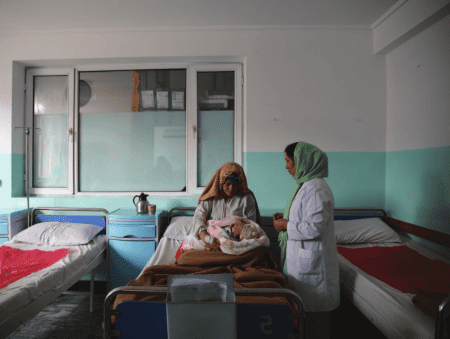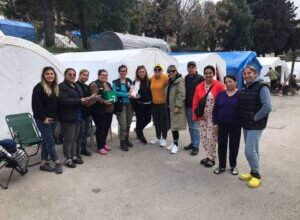
Falling donor support for essential services in Afghanistan is reducing women’s access to essential health care, Human Rights Watch said in a report released today. More cuts are likely in coming months following the announcement by United States President Joe Biden that the US will withdraw all its forces from Afghanistan by September 11, 2021.
The 39-page report, “‘I Would Like Four Kids—If We Stay Alive’: Women’s Access to Health Care in Afghanistan,” documents barriers to Afghan women and girls obtaining health care and the healthcare system’s deterioration due to declining international support. The drop in international donor funding has already had a harmful—and life-threatening—impact on the lives of many women and girls, as it affects access to and quality of health care.
“International donors are locked in a waiting game to see whether the withdrawal of foreign troops will result in the Taliban gaining greater control of the country,” said Heather Barr, interim co-director of women’s rights at Human Rights Watch. “But this is no excuse for cutting funds for essential services that aid groups have managed to deliver in insecure and Taliban-controlled areas.”
For the report, Human Rights Watch interviewed 56 people in Afghanistan in March and April, including 34 women about their experiences obtaining health care, and 18 Afghans working in the health sector, including the public health minister.
Over the past two decades, the Afghan government has depended on international donor support to fund essential services like health care. But this donor support has been falling for years and will likely continue to do so–perhaps precipitously, Human Rights Watch said. In 2013, member countries of the Organisation for Economic Co-operation and Development’s (OECD) Development Assistance Committee contributed US$141 million to health and population assistance in Afghanistan. By 2019, this figure had dropped 26 percent to $105 million.
The Afghan government has little ability in the short term to move toward self-sufficiency. Over 75 percent of its budget comes from international donors. In 2020, the country’s sustainable domestic revenues fell 2.8 percent compared with 2019, due in large part to the economic downturn from the Covid-19 pandemic.
As hospitals run out of funds to pay for basic medical supplies, they are charging for supplies that previously were free. Many patients cannot pay or even afford transportation to a health facility, which may be far away. Progress on some key indicators, such as accessing prenatal care and skilled birth attendance, is stagnating, or even reversing.
“It’s Taliban-controlled—people are poor, there are no jobs,” said a doctor from Kapisa province, northeast of Kabul. “Clinics are far from where they live, so often [women giving birth] die or the baby dies…. People don’t even have money for transport to the center, to a government hospital, and you still have to pay for medicines at the government hospital.”
Women and girls struggle to get even the most basic information about health and family planning. There is an unmet need for modern forms of contraception, and prenatal and postnatal care is often unavailable. Modern cancer and fertility treatment and mental health care are largely unavailable. Routine preventive care such as pap smears and mammograms are almost unheard of; and a large proportion of births are still unattended by a professional.
Source: HRW







